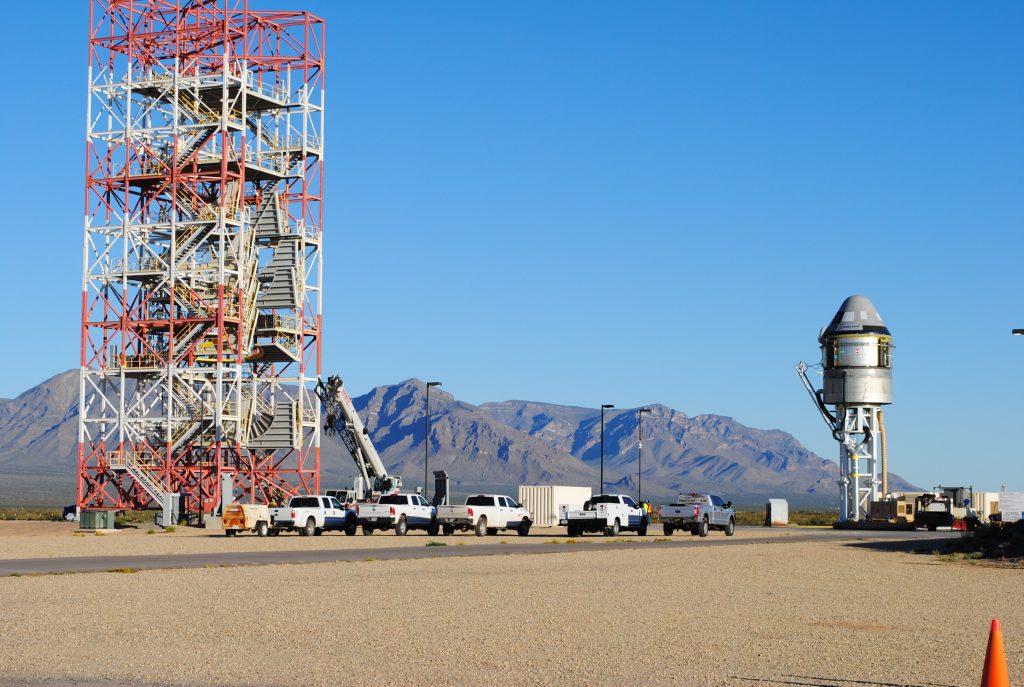
Boeing is preparing to put its CST-100 Starliner’s launch abort system to the test on Monday, Nov. 4, at Launch Complex 32 on White Sands Missile Range in New Mexico. The test, scheduled to begin at 7 a.m. MST (9 a.m. EST) with a three-hour window, will demonstrate the spacecraft’s ability to quickly escape the launch pad in the event of an emergency on launch day. This will be Boeing’s first flight test as part of NASA’s Commercial Crew Program and will help evaluate the performance of the abort system prior to missions to the International Space Station with a crew onboard.
For the demonstration, Starliner and its service module will be resting on the test stand when a zero-zero abort is declared. This means the 16.5-foot vehicle is in the launch position at zero altitude and traveling zero miles an hour. The flight test begins with ignition of Starliner’s four launch abort engines (LAE), pushing the spacecraft away from the stand with a combined 160,000 pounds of thrust. The orbital maneuvering and attitude (OMAC) thrusters kick in simultaneously with LAE ignition to maneuver the spacecraft into the proper orientation for parachute deployment. The vehicle is expected to reach an altitude of about 4,500 feet above the ground, and push about 7,000 feet (about 1 mile) north of the test stand.
The ascent cover and forward heat shield protecting the spacecraft’s parachutes will jettison roughly 19 seconds into flight in preparation for landing. Then, drogue parachutes will deploy, prior to the main parachutes, slowing the descent of the vehicle.
After the parachutes open, the service module will separate from the crew module, followed by the base heat shield. Finally, airbags will inflate, and Starliner will touch down in the New Mexico desert approximately one-and-a-half minutes after the test began. The spacecraft service module, which has a total of 52 engines including those designed to give small directional changes in orbit, is not planned or expected to survive the test.
The zero-zero abort scenario is especially challenging because the spacecraft abort system must quickly get away from a potentially dangerous rocket, but also must gain enough altitude and distance for the parachutes to open and landing systems to be activated.
The abort test will provide Boeing and NASA with reams of data to help evaluate and verify the performance of the vehicle’s abort systems – a critical capability for NASA’s certification of Starliner to fly astronauts to station.
Although Boeing’s abort test does not have to be completed prior to the company’s uncrewed Orbital Flight Test to the space station, it is a major milestone ahead of the first flight of the new system with astronauts, called Crew Flight Test.
NASA and its commercial partners, Boeing and SpaceX, are working toward returning the capability to launch American astronauts to the space station and low-Earth orbit on American-built spacecraft from American soil.
